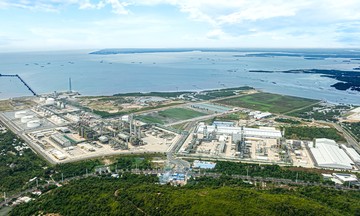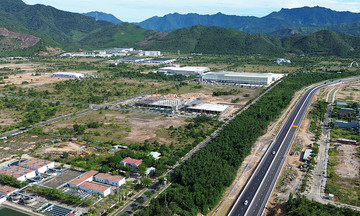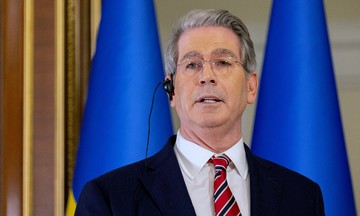The US Department of Labor reported that the PPI rose 0.9% in July compared to June, marking the largest increase in over three years. Year-over-year, the index climbed 3.3%, exceeding economists' forecasts. The PPI is also known as wholesale inflation.
Excluding food and energy prices, the core PPI increased 0.9% from June, the highest since 3/2022. Compared to the same period last year, the core PPI rose 3.7%, up from 2.6% in June.
Input food prices saw a 1.4% increase compared to June, led by a 38.9% surge in vegetable prices. Meanwhile, household electronics prices rose 5%. Both categories have high import rates into the US.
 |
Workers in a combine harvester factory in Mendota, Illinois on 21/2. *Reuters* |
Earlier, the Labor Department announced that the consumer price index (CPI) in July rose 2.7% year-over-year, matching June's figure. Core consumer prices increased 3.1%, compared to 2.9% in June. Both figures remain above the Federal Reserve's (Fed) 2% target.
According to experts, the faster rise in producer prices compared to retail prices suggests that importers are absorbing some of the increased costs from President Trump's tariffs, rather than passing them entirely onto consumers.
However, this may not be sustainable. The impact of tariffs has also been partially delayed, as many importers stocked up on goods before the tariffs took effect. These inventories are now dwindling.
"It's only a matter of time before producers pass on the increased costs from tariffs to consumers who are already weary of inflation," said Christopher Rupkey, chief economist at financial market research firm FWDBonds.
Both the PPI and CPI are published by the Bureau of Labor Statistics (BLS) within the US Department of Labor, an agency currently under criticism from President Trump. Following the BLS's disappointing July jobs report, he dismissed the agency's director, alleging that the data was "manipulated for political purposes."
The PPI report could complicate the Fed's interest rate decision, as it's often seen as an early indicator of consumer inflation trends. Economists also monitor the PPI because some of its components, like healthcare and financial services prices, are incorporated into the personal consumption expenditures (PCE) index, the Fed's preferred inflation gauge.
After the concerning July jobs report, the market anticipated an interest rate cut by the Fed in its September meeting to stimulate hiring. However, Carl Weinberg, chief economist at High Frequency Economics, suggests that the sharp rise in PPI has lowered market expectations for a rate cut next month. The July PCE data is scheduled for release on 29/8.
Phien An (*AP*)












